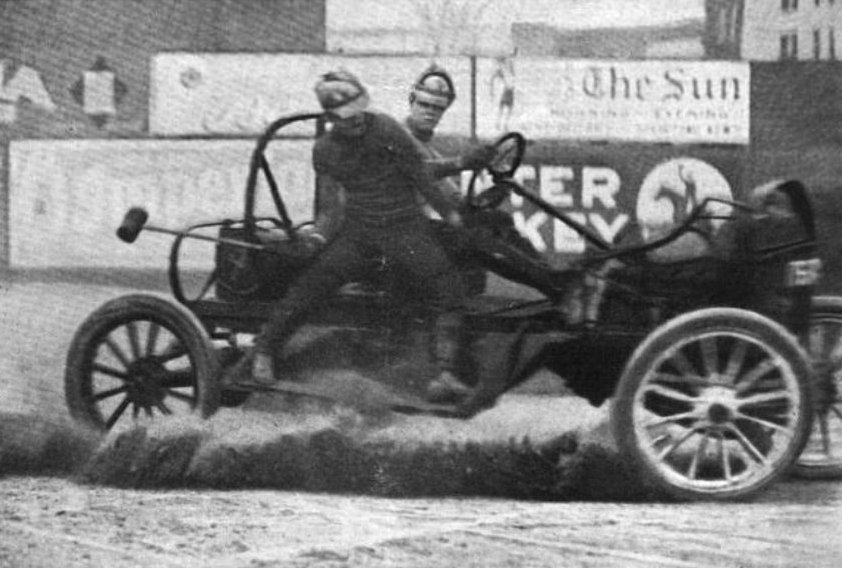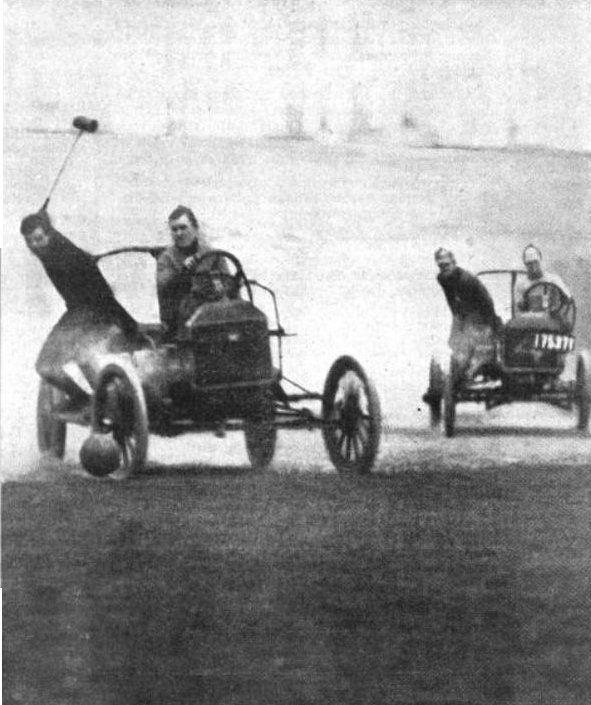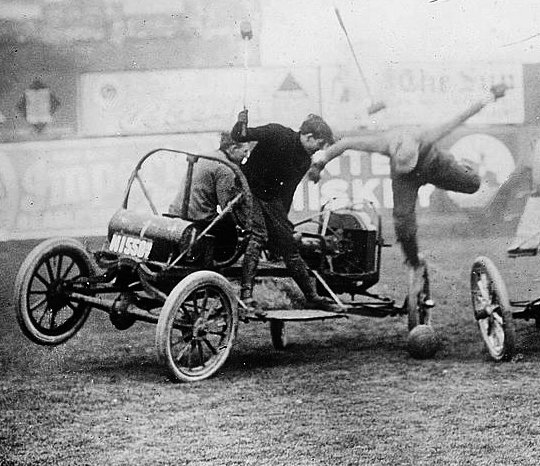The odd game of Auto Polo was popularized in the summer of 1912 because of a marketing ploy by a Kansas Ford dealer trying to sell Model T’s. It soon become a craze in New York City, headlining at Madison Square Garden for most of December. Although the activity had initially been devised a decade earlier, it was this moment when the game got (relatively) big.
Dangerous as all fuck, the sport squared off an equal number of teams of vehicles holding two players–the driver and the mallet-wielder–trying to propel a ball between two posts. It thrived in New York and Chicago for most of the 1920s but disappeared before the arrival of the Great Depression. By then, cars were largely stable enough to sell themselves, even if most Americans couldn’t afford them. The photographs above are not from the MSG contests, but an article in the December 8, 1912 New York Times recalls that particular series. An excerpt:
Not a few of the dwellers or toilers along Automobile Row have been predicting a popular future for auto polo, the game from the South and West which gave the public a number of thrills as a game and furnished food for thought for the motor enthusiast at Madison Square Garden for the week that just ended. There had been rumors of the game from time to time, and people heard that the four-wheel “ponies” on which it was played provided as many sensational moments as the four-legged ones of the horse-polo match. But no one was quite prepared for the exhibition which took place in the arena still covered, oddly enough, with the tanbark of the Horse Show.
As in regulation polo, the mallet is only a factor in the newer game. The horse, or in this case the car, is quite as important to success, if not more so. It was on the performance of the cars that the interest of automobile men naturally centered. Occasionally there was a bit of of engine trouble, but for the most part the little machines, stripped to the bare frames and lacking even bonnets, stood up manfully under conditions that were grueling to say the least. Every canon of good motor car driving, from the viewpoint of the car, was broken time and again as the drivers sought to block the bounding leather ball or fed gas to their motors until the pop of explosions became an almost continuous roar in an effort to be the first “on” the elusive prize. Turns so short that they resulted in turnovers were made several times, but still the motors remained operable, to the surprise of the onlookers.
…
Whether the game can ever become general–even as general as polo pony–is a moot question. It involves, in the first place, a deal of expense, for, played in earnest and in the heat of the desire to win, a big repair bill would be inevitable. In other words, it would be an expensive thing to promote in a professional way.
…
It would be hard to devise a game in which the players took bigger chances of mishap. The factor of danger may prove either a damper or a stimulus. At any rate the game has definitely taken its place as a circus stunt crowded with thrills, and a demonstration of car ability which is a revelation even to the man who has driven his hundreds of miles at a mile-a-minute clip.•




